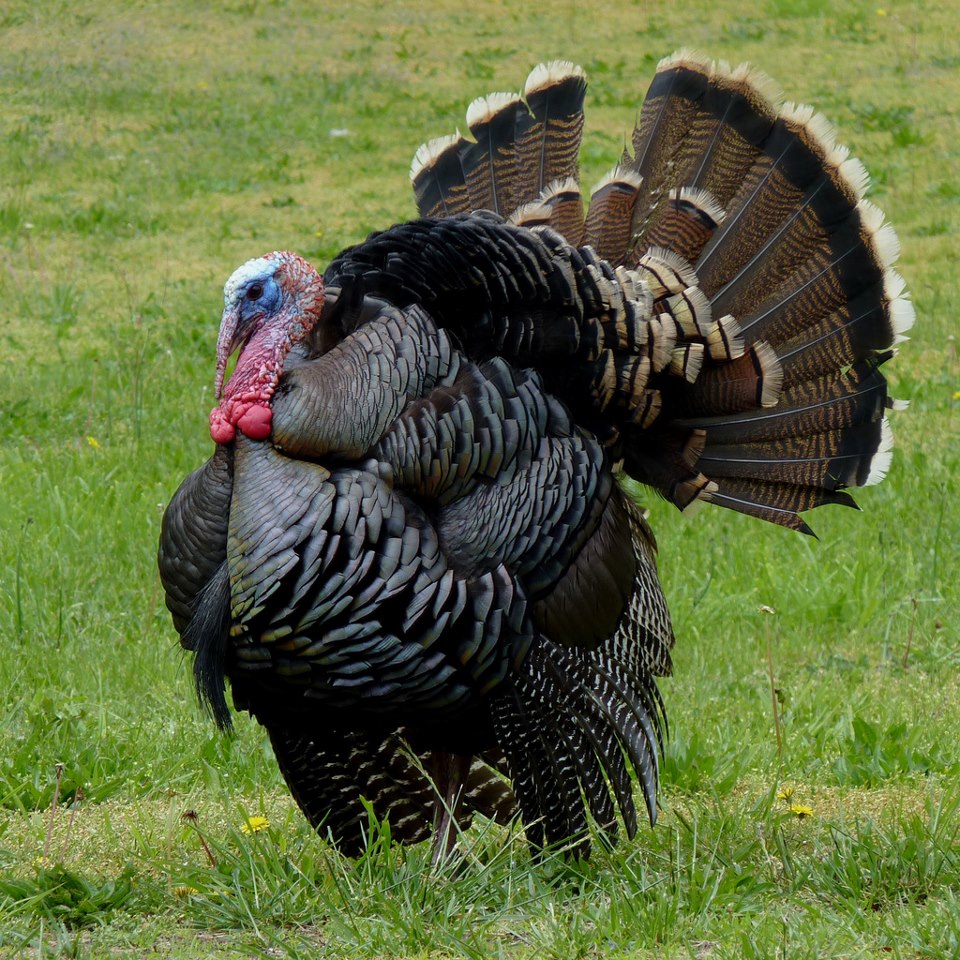Wild Turkeys Are Back, A Century After Severe Decline

In the early 1900s, wild turkeys seemed to be on the road toward extinction, as unregulated hunting and widespread logging had wiped them out over much of their range. In the last few decades, however, the birds have made an incredible recovery, reaching levels near those of their precolonial days.
The birds are now found in virtually all parts of their former territory, and some new places where they hadn't been previously, said wildlife biologist Thomas Hughes of the National Wild Turkey Federation, an organization that has reintroduced the animals into the wild. They can be found in 49 U.S. states, with the only exception being Alaska, Hughes said. In total, about 7 million wild turkeys live in the United States; prior to 1500, an estimated 10 million turkeys existed, he added.
In some places, the growth of wild turkey populations has been so dramatic it has caused minor problems, said Kelsey Sullivan, a wildlife biologist with the Maine Department of Inland Fisheries and Wildlife in Bangor. In Maine, for example, the birds have been known to damage strawberry and blueberry crops. They have also been found rummaging in the fodder of dairy cattle, which they can contaminate with their droppings, Sullivan said. [Gobble, Gobble: 8 Terrific Turkey Facts]
Minor conflicts
There have also been conflicts with homeowners, particularly in areas that have recently been developed. "There have been problems from [turkey] droppings on the lawn, to roosting on the roof, to pecking the side of a car where they see their reflection, to chasing the mailman from time to time," Hughes told LiveScience.
But by and large, these conflicts are minor and isolated, Sullivan said. They are also not usually difficult to fix; loud noises and dogs are effective at keeping the birds away, he added.
Furthermore, the birds are often blamed for damage that they have not caused. Animals that are active at night, like deer and raccoons, are more likely than wild turkeys to destroy most crops, according to work by researchers at Purdue University. One 2005 study, for example, found that less than 0.1 percent of the crop damage in Indiana is caused by wild turkeys. But when the turkeys show up in the morning, often in the same areas that have been damaged, they get wrongly blamed, said Duane Diefenbach, a wildlife researcher at Pennsylvania State University.
Sign up for the Live Science daily newsletter now
Get the world’s most fascinating discoveries delivered straight to your inbox.
Gobbler restocking
Prior to the 1950s, efforts to restock the wild turkeys mostly failed, Hughes said. That's because researchers tried to use domestically bred wild turkeys, which couldn't survive in nature. By the 1950s, biologists had developed a special type of cannon-propelled net that allowed scientists to catch groups of wild turkeys more effectively, to translocate them to new areas, he added. Since then, the bird has slowly made its way back.
While populations continue to grow and spread in some areas, particularly the Midwest, populations in some Northeastern states appear to have leveled off, according to Diefenbach and Sullivan. In the Southeast, the traditional stronghold of the iconic animal, populations have declined in some areas, Hughes said. The reason isn't yet clear, although it may have to do with changes in forest management that have allowed dense underbrush to grow, as well as increased urban development. Wild turkeys can live in forests and farmland, but don't do well in dense thickets — they need open spaces where males can display to females as a part of their breeding ritual, Hughes said.
Hughes first got interested in wild turkeys when hunting them with his father as a child in northern Florida. And he still hunts them "at every opportunity," he added. In most areas, turkey-hunting season occurs in the spring and fall, with catch limits designed to keep populations stable or growing, Hughes said.
"We consider them a real delicacy on the table in my house," Hughes said. Especially at Thanksgiving, he added.
Email Douglas Main or follow him on Twitter or Google+. Follow us @livescience, Facebook or Google+. Article originally on LiveScience.










